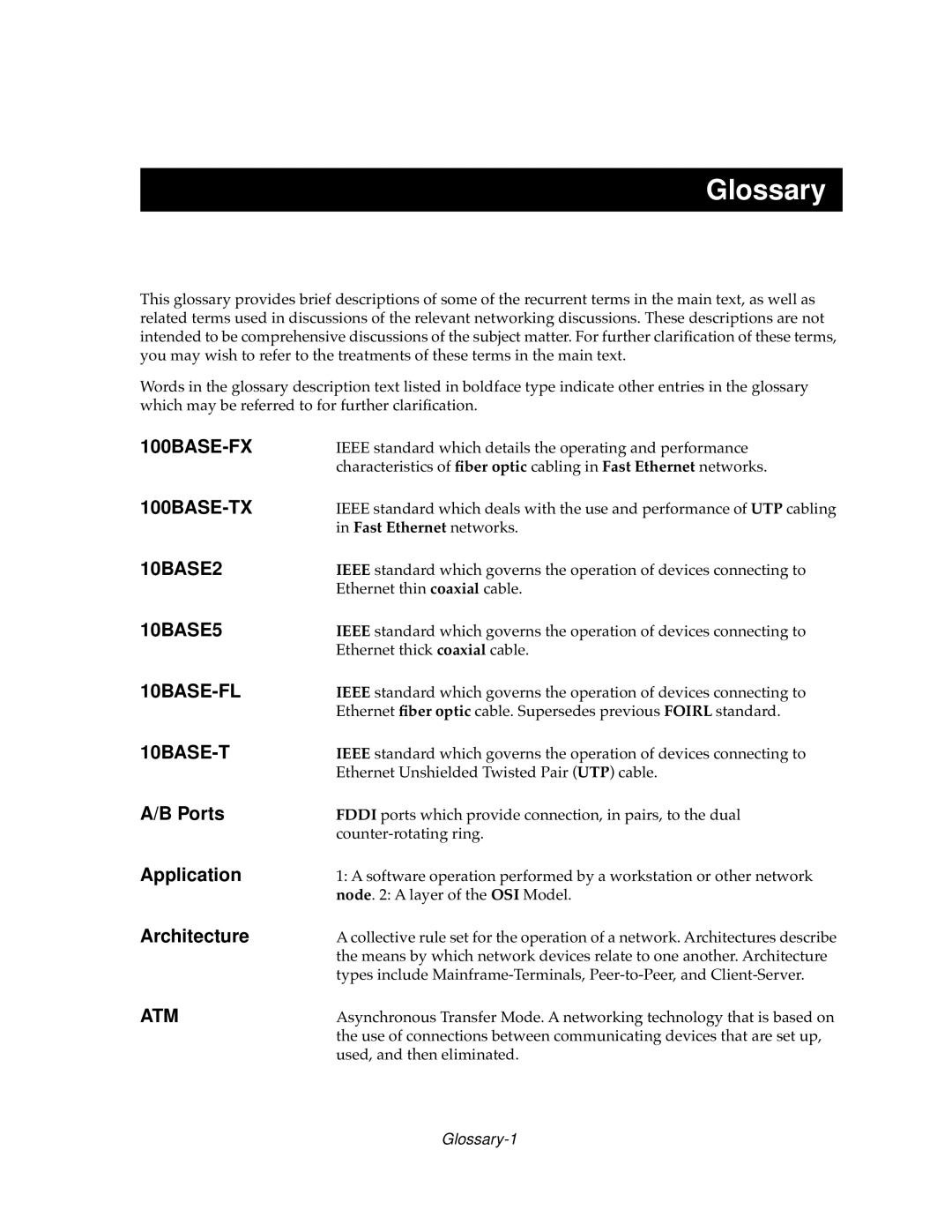Glossary
This glossary provides brief descriptions of some of the recurrent terms in the main text, as well as related terms used in discussions of the relevant networking discussions. These descriptions are not intended to be comprehensive discussions of the subject matter. For further clarification of these terms, you may wish to refer to the treatments of these terms in the main text.
Words in the glossary description text listed in boldface type indicate other entries in the glossary which may be referred to for further clarification.
100BASE-FX
100BASE-TX
10BASE2
10BASE5
10BASE-FL
10BASE-T
A/B Ports
Application
Architecture
IEEE standard which details the operating and performance characteristics of fiber optic cabling in Fast Ethernet networks.
IEEE standard which deals with the use and performance of UTP cabling in Fast Ethernet networks.
IEEE standard which governs the operation of devices connecting to Ethernet thin coaxial cable.
IEEE standard which governs the operation of devices connecting to Ethernet thick coaxial cable.
IEEE standard which governs the operation of devices connecting to Ethernet fiber optic cable. Supersedes previous FOIRL standard.
IEEE standard which governs the operation of devices connecting to Ethernet Unshielded Twisted Pair (UTP) cable.
FDDI ports which provide connection, in pairs, to the dual
1:A software operation performed by a workstation or other network node. 2: A layer of the OSI Model.
A collective rule set for the operation of a network. Architectures describe the means by which network devices relate to one another. Architecture types include
ATM | Asynchronous Transfer Mode. A networking technology that is based on |
| the use of connections between communicating devices that are set up, |
| used, and then eliminated. |
